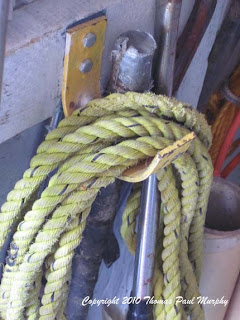Air quality is terrible, smog, mercury, smoke, exhaust gases, you name it the list of perpetrators is a long one and it is not healthy even to read these toxic names...
Stuffy nose at night, allergy problems, dirty bedroom floors, constant dusting. I have found the answer
These are simple window filters you can make with little cost. They can be made to any desired height. Mine are about 8 1/2 inches high and 36 ¾ or 36 7/8 long. The window gaps were slightly different side to side when comparing one window to the other. I am considering making a shorter height pair for my two bedroom windows for the fall and late spring weather when it is colder but not too cold to close the window completely.
Long pieces of the filter frame were made from scrap strips of two by fours that were trimmed to make them modular. The end and middle upright pieces were made from short two by four scraps. And the long strips were fastened to the upright frameworks with inset square screws. Glue was added to the joints before they were closed with the screws. The two frames took me about an hour and half to make working very fast, not including paint drying time.
The frame was then primed, painted and clear coat sealed. Or something like that, maybe they were just primed and clear coated. Anyhow they withstand rain without any coming inside the house and the clear coat keeps them from absorbing water.
The filter material was cut from a new fine furnace filter I bought at Menards (our discounting regional hardware store) for around nine dollars. One filter was enough to -make two of these window filters. The product name TrueBlue Allergan Protection. The original filter size was 20 X 25 X 1 and they are rated MERV 11. They are manufactured by Protection Plus Industries, the website is http://www.trueblue.com/ and their phone number is 888-808-9100. And the filter had a metal one inch grating to help it keep rigid, that makes it more durable. A long scissors was used to cut it from the single layer cardboard of the surface of the original filter frameworks, this is the part that is made on the filter to reinforce the filter media from its bellows or pleats and keep the pleats or bellows fixed in place. This allows you to stretch out the filter and make it easier to work with. I have no idea about the fire rating of these and did not consider it because they are placed inside a furnace. But if you light candles or something these would probably burn like a curtain or shade also.
The filter was staple gunned to the wood frame I made. For depth of two relevant issues see:
The filter sits tightly in the window and is held in place by pulling the top down to about abut against the top of the filter. It was made to precision length so it sits snug side to side. The face of the filter with filter media stapled to it faces outdoors. The window screen is still in place when these are used.
A small gasket seals the glass window to glass window gap above the filter that was created between the glass layers as the window is in a raised position. The gasket was made from military surplus foam that was backed with foil and purchased from American Science and Surplus, a brief check tells me they sold out of this, but any 1/4" thick compressible foam that can be cut to dimensional strips of sufficient length will work This material worked very in the past to serve as a window gasket during the winter and summer months to insulate any air gaps.
What surprised me most about using these filters was that when I cleaned and mopped my hardwood floor after three months of having these filters in it was very clear. And upon inspection of the outside of the filter after three months they were gray with dirt. A dirt that would have made it in the house and my lungs, and dust on all the inside that would have to be cleaned. This need for cleaning was eliminated.
To keep cool in summer place a directional quiet fan on a shelf above your bed, mine is a Lasko model 4904, purchased at either Wal*Mart? or Menards? or online? Connect this to one of those cords with a lighted ball switch and locate this next to your head where you can turn it on if weren’t hot when you went to bed but got hot during the night. The cord I have is a YU CHOU model YC14 and I am not sure where I bought it. The convenience of these two parts alone might save you from heat stroke someday. PURCHASE BALL SWITCH CORD HERE
I also have a small ultraviolet air cleaner in my room to further clean the air, Airtech Model 2000 by Exa-Med, I bought this online. Purchase Ultraviolet Air Cleaner Here
I recommend everyone make these window air filters or buy a commercially available model window air filter as they are available on line.
God Bless Those Who Read and Learn and Make and Do
Thomas Paul Murphy
Copyright 2010 Thomas Paul Murphy





















